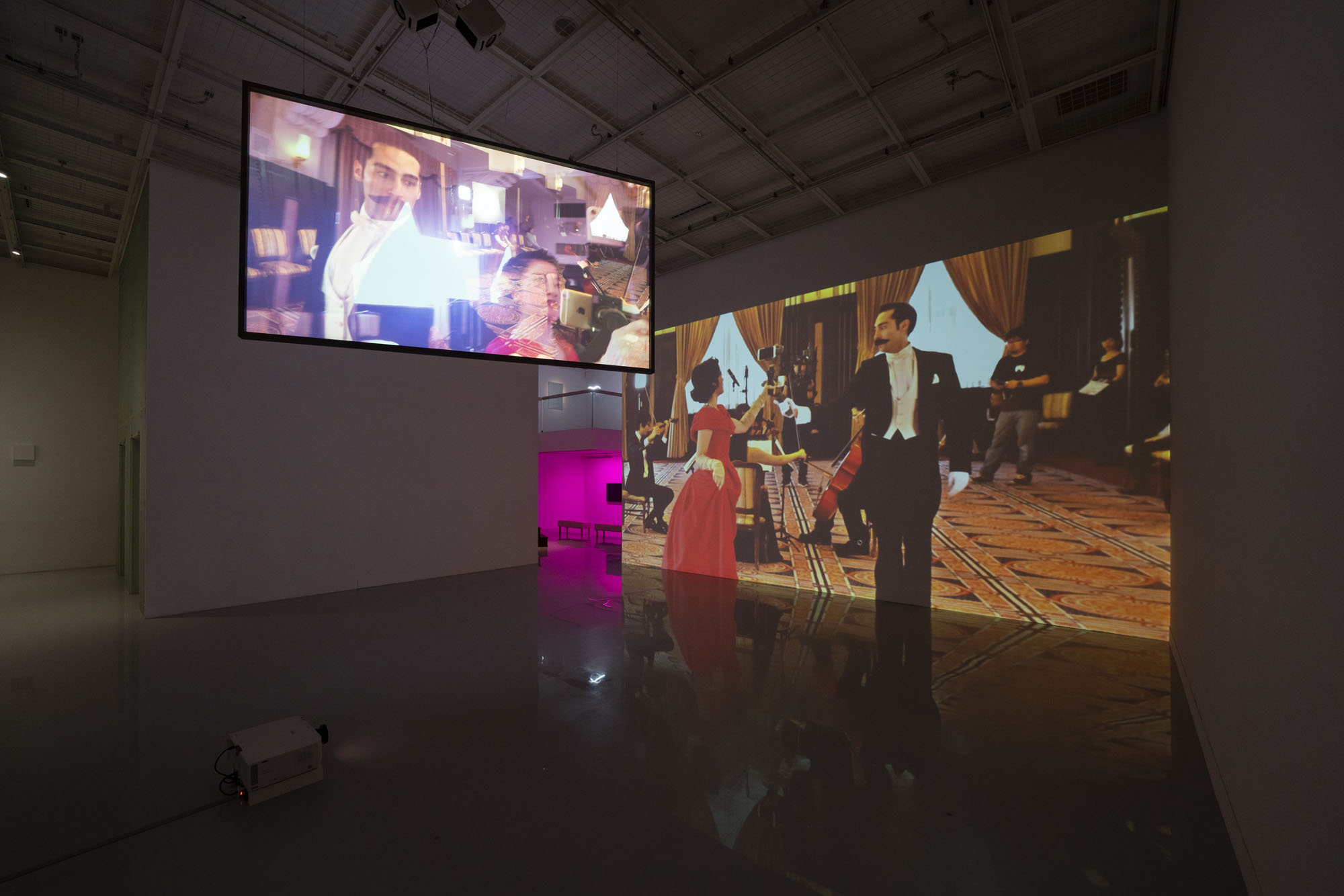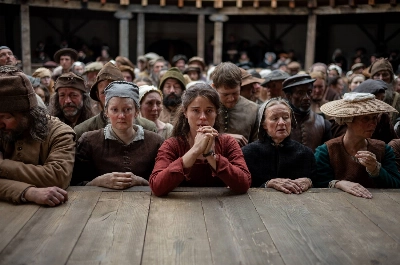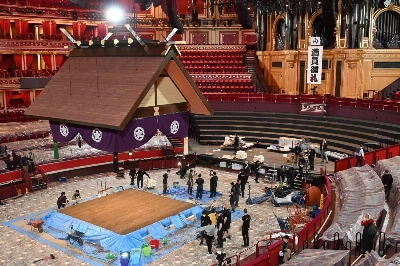For fans of Stanley Kubrick's "2001: A Space Odyssey," hearing Johan Strauss II's "The Blue Danube" coming up through the red-carpeted stairwell of the Shiseido Gallery is a real treat. Kubrick used the 19th-century waltz as an auditory cue to indicate the evolution of homo sapiens but it was also a dig at how we hide our ongoing savagery behind the veil of socialized behavior.
The minimalist elegance of Yu Araki's exhibition "Le Souvenir Du Japon" at first seems to be an affirmation of civilization and the redemptive possibilities of beauty; however, within the gorgeous setup is a postcolonial ambivalence about the social and historical conditions of "taste." The first pieces that the viewer comes across after descending the staircase — a mirror and a looping tube light — are a primer for this. In mathematical terminology, the shape of the chandelier is nonorientable; it appears to have two sides, but in fact there is only one. It is reflected in the mirror, but if you stand in front of it your body blocks out the reflection and you can only see yourself. So far, so clever.
The largest piece in the exhibition, "The Last Ball," references a short story by renowned Japanese writer Ryunosuke Akutagawa, which is itself based on an account of a ball held in Edo/Tokyo, written by French naval officer and writer Pierre Loti (1850-1923). Two large screens show a waltz between two costumed actors playing the roles of Loti and his dance partner Akiko in an environment that is meant to evoke the 1883 Rokumeikan building that was once a venue for numerous social and diplomatic events until its demolition in 1941.



















With your current subscription plan you can comment on stories. However, before writing your first comment, please create a display name in the Profile section of your subscriber account page.